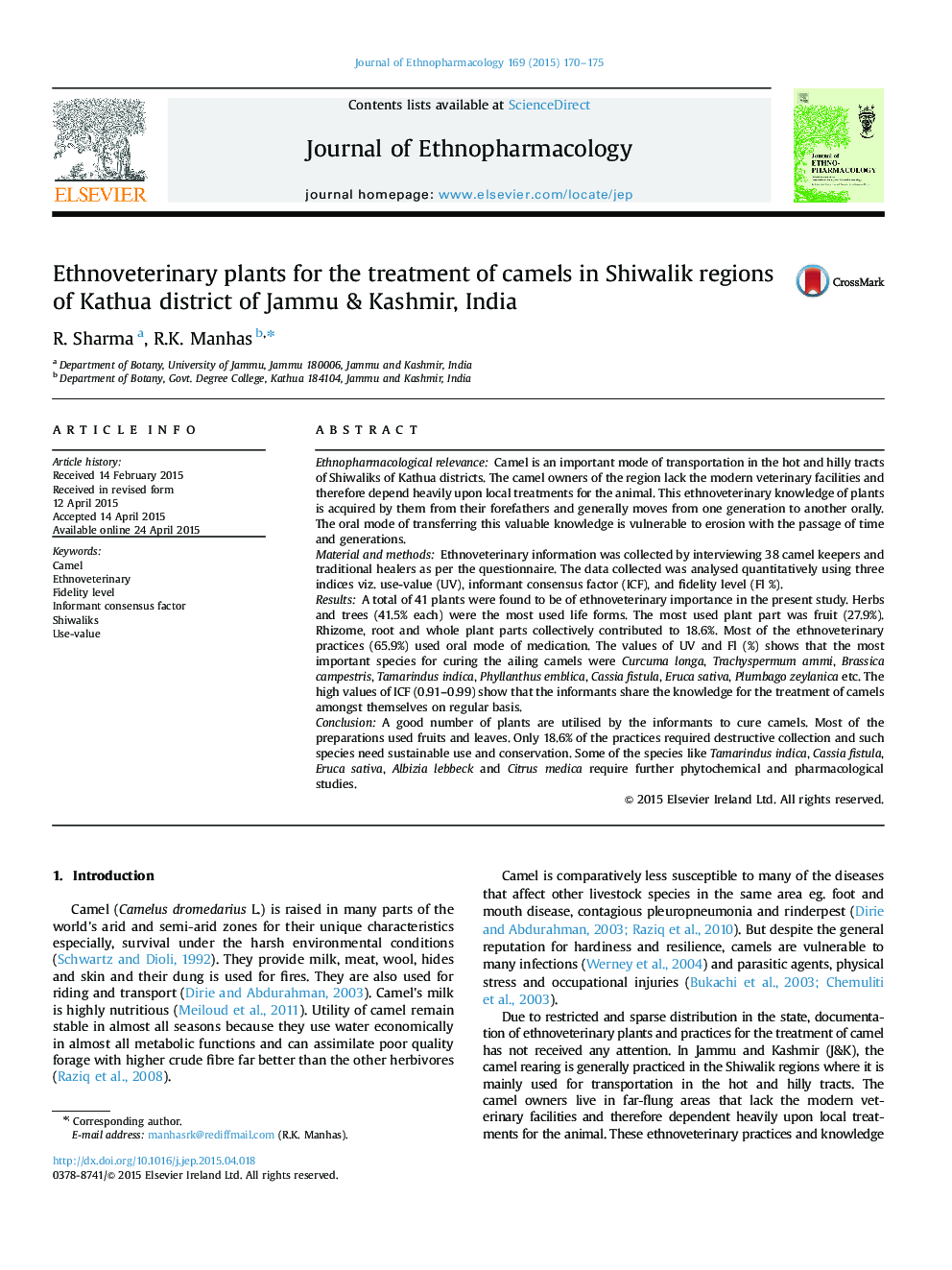| کد مقاله | کد نشریه | سال انتشار | مقاله انگلیسی | نسخه تمام متن |
|---|---|---|---|---|
| 2544979 | 1560393 | 2015 | 6 صفحه PDF | دانلود رایگان |

Ethnopharmacological relevanceCamel is an important mode of transportation in the hot and hilly tracts of Shiwaliks of Kathua districts. The camel owners of the region lack the modern veterinary facilities and therefore depend heavily upon local treatments for the animal. This ethnoveterinary knowledge of plants is acquired by them from their forefathers and generally moves from one generation to another orally. The oral mode of transferring this valuable knowledge is vulnerable to erosion with the passage of time and generations.Material and methodsEthnoveterinary information was collected by interviewing 38 camel keepers and traditional healers as per the questionnaire. The data collected was analysed quantitatively using three indices viz. use-value (UV), informant consensus factor (ICF), and fidelity level (Fl %).ResultsA total of 41 plants were found to be of ethnoveterinary importance in the present study. Herbs and trees (41.5% each) were the most used life forms. The most used plant part was fruit (27.9%). Rhizome, root and whole plant parts collectively contributed to 18.6%. Most of the ethnoveterinary practices (65.9%) used oral mode of medication. The values of UV and Fl (%) shows that the most important species for curing the ailing camels were Curcuma longa, Trachyspermum ammi, Brassica campestris, Tamarindus indica, Phyllanthus emblica, Cassia fistula, Eruca sativa, Plumbago zeylanica etc. The high values of ICF (0.91–0.99) show that the informants share the knowledge for the treatment of camels amongst themselves on regular basis.ConclusionA good number of plants are utilised by the informants to cure camels. Most of the preparations used fruits and leaves. Only 18.6% of the practices required destructive collection and such species need sustainable use and conservation. Some of the species like Tamarindus indica, Cassia fistula, Eruca sativa, Albizia lebbeck and Citrus medica require further phytochemical and pharmacological studies.
Figure optionsDownload high-quality image (172 K)Download as PowerPoint slide
Journal: Journal of Ethnopharmacology - Volume 169, 1 July 2015, Pages 170–175